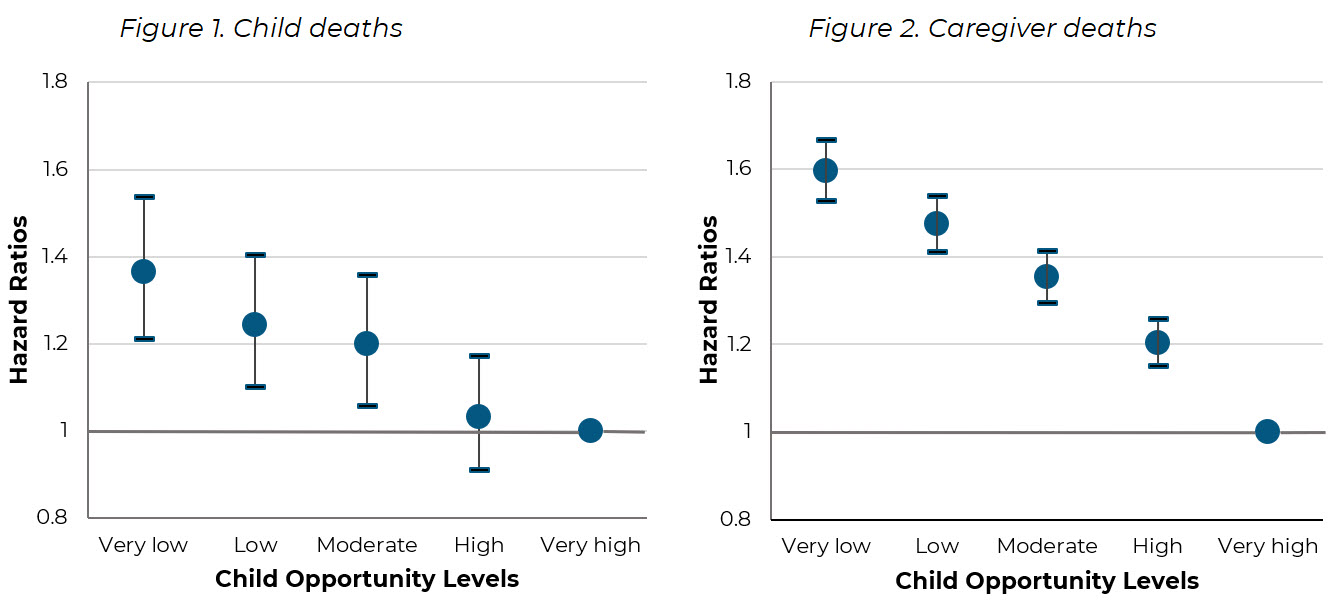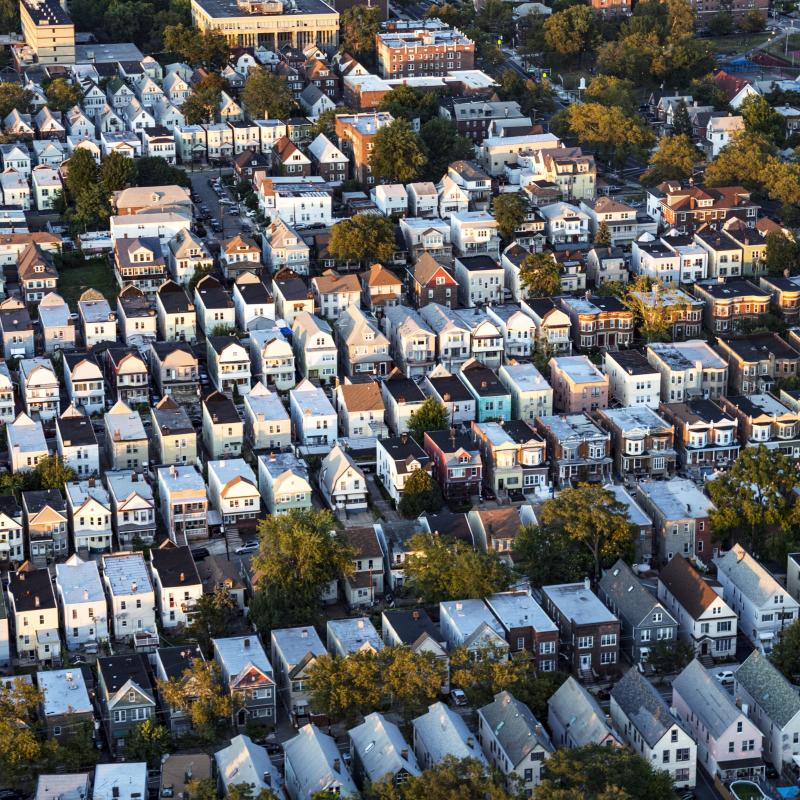The stark inequities in child health in the United States are alarming. For decades, the U.S. has had the highest child mortality rates relative to other wealthy nations, contributing to an overall life expectancy lower than in most other highly developed countries. New research using the Child Opportunity Index shows how these mortality risks are inequitably distributed across U.S. neighborhoods, and that children and families living in lower-opportunity neighborhoods are at a much higher risk for premature death.
The study
Published last week in Pediatrics, a new study led by Natalie Slopen and co-authored by diversitydatakids.org's director Dolores Acevedo-Garcia and research director Clemens Noelke uses the Child Opportunity Index 2.0 (COI) to explore how neighborhood characteristics are linked to mortality among children and their caregivers. In an analysis of 1,025,000 children from birth to age 17 from nearly every census tract in all 50 states, the researchers investigated the child mortality rate and the mortality rate of any adult in the child’s household over an 11-year period, from 2008 to 2019.
The key findings are shown in Figure 1 and Figure 2, below. Children from very low-opportunity neighborhoods were 1.3 times as likely to die over the 11-year period—and 1.6 times as likely to experience the death of a caregiver—than children from very high-opportunity neighborhoods. The elevated risk of child mortality in part reflects the increased risks of dying from external causes—in particular, fire-arm related injuries.

These findings are consistent with recent research tying neighborhood opportunity to health outcomes. Studies using the Child Opportunity Index have shown that children from lower-opportunity neighborhoods have worse cardiometabolic health, increased emergency department visits and hospitalizations and delayed access to care in case of an acute emergency. One recent study found that among children needing emergency care for gunshot wounds, nearly 50% came from very low-opportunity neighborhoods, while only 5% came from very high-opportunity neighborhoods. Other research has found that the COI is strongly associated with life expectancy, explaining nearly half of the variation in life expectancy across U.S. neighborhoods.
A call to action for child and family wellbeing
These results should be a call to action for health professionals, advocates, policymakers and all who care about child and family wellbeing. They show that the neighborhood a child is born into has a sizeable effect on their own risk of dying and on the risk that they will experience the death of a caregiver at a young age. These excess deaths in lower-opportunity neighborhoods potentially also explain a significant part of the gap in life expectancy between the U.S. and other wealthy nations.
The Child Opportunity Index captures the compounding forms of neighborhood inequity that contribute to higher mortality in lower opportunity-neighborhoods. It is therefore a useful tool for identifying neighborhoods in need of investment and for the spatial targeting of resources that can help alleviate the stark neighborhood inequities in mortality risks and life expectancy. Knowing where children and caregivers are most at-risk is the first step to ensuring they receive adequate opportunities for lifelong health and success.
Read the full study: Neighborhood Opportunity and Mortality Among Children and Adults in Their Households
Explore our full library of impact stories to see how policymakers, researchers and program administrators use Child Opportunity Index to distribute resources equitably—and to ensure children in our highest-need neighborhoods are healthy, active and learning
Learn more about the Child Opportunity Index





